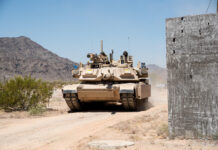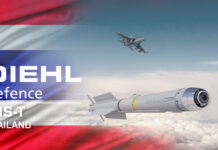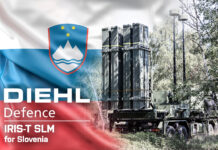On 9 November 2022, the German government revealed that it had supplied additional IRIS-T SL missiles to Ukraine, to arm the IRIS-T SLM battery previously delivered to Ukraine on 11 October 2022. The additional missiles were present in a list of military assistance to Ukraine published on 9 November by the German government, however the quantity of missiles supplied was not disclosed.
Ukraine’s forces have already begun to operate their first of four schedules IRIS-T SLM batteries, and have already attested to its effectiveness, with Ukrainian Air Force representative Yuriy Ignat stating on 31 October 2022 on Twitter that the system had shown “100% effectiveness” in operation that day. However, further details on this figure were not provided, so it is unclear how many successful engagements comprise this figure, and whether this figure refers to the system’s overall success in defeating threats, which may require multiple missiles per threat, or if it was meant to refer to the success rate per missile launched.
The IRIS-T SLM system is a medium-range air defence system developed by Diehl Defence, which is intended to provide protection against aerial threats including missiles and aircraft. The IRIS-T SL missile is a further development of the IRIS-T missile used in the short-range variant of the system. It is likewise equipped with an infrared (IR) seeker, however in the IRIS-T SL’s case, the seeker is fitted with a jettisonable aerodynamic cover to reduce drag during the launch and mid-course phases, before being jettisoned for the terminal phase. The missile is capable of engaging threats out to a maximum range of 40 km, and to a maximum altitude of 20 km. The IRIS-T SLM system is also provided with a Hensoldt TRML-4D Gallium Nitride (GaN) Active Electronically Scanned Array (AESA) multifunctional radar for detection and tracking. The TRML-4D radar operates in the C-band, and has an instrumented maximum range of 250 km, and is capable of simultaneously tracking up to 1,500 targets, with typical tracking ranges for fighter aircraft-sized targets being 120 km, and around 60 km for missiles. The antenna has a 100° field of regard while being operated statically, but is capable of rotating to provide coverage through 360°.
OH












